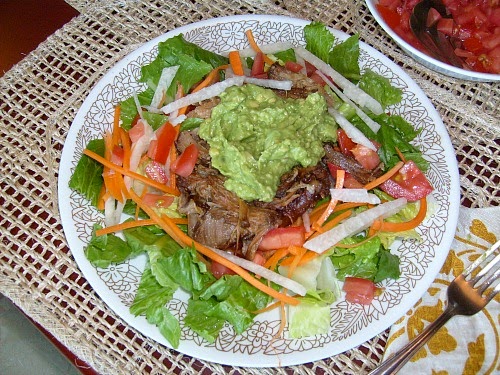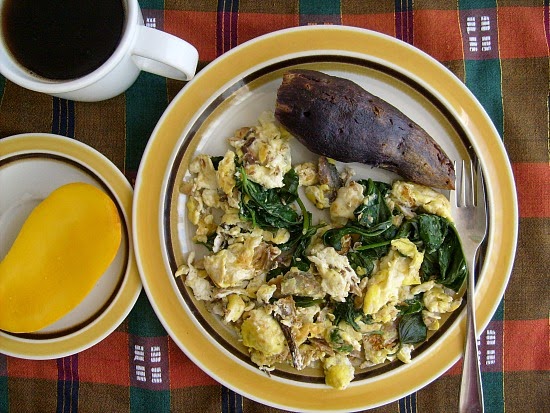All good things, etc.
It’s been really fun tinkering with traditional Filipino recipes this past month to make them Whole30 compliant. And not just the recipes: as I wrote in a previous post, one of my goals was to try to figure out food combinations and strategies to create meals wherein rice is not the sun and everything else just revolves around it. As this food project draws to a close, let me just recap some of the alternatives we’ve explored:
You can use sweet potatoes as the main starchy component, as I did with my bistek Tagalog; or you can use saging na saba (sweet plantains), as I did with my (so-called) Arroz a la cubana.
You can use noodle-less pancit to accompany your protein instead of rice. Regular pancit (with rice noodles) already substitutes for rice occasionally, but making it Whole30 using spaghetti squash allows you to make a much healthier swap.
You can make egg “rice,” as I did with my skinless longanisa. This is a particularly adaptable strategy for breakfast, since many of our breakfast dishes already combine various meats and fishes with eggs and rice. Just omit the rice and elevate the role of the eggs, and you still have a great meal combination. (I used a somewhat similar strategy with my tinapa egg scramble.)
You can make hefty salads from such dishes as pork adobo, instead of making them part of just another rice meal.
And I’m sure there are many, many more strategies and substitutions out there just waiting to be realized.
More than anything, I hope I’ve shown here that there are alternatives to our rice-centric meals that nevertheless hew close to our beloved dishes and traditions. So that even if not many Filipinos do a Whole30, at least it’s clear that we have the option of trying other meals – delicious and healthy meals – that do not always require rice.
And as for the non-Filipinos who may have visited these pages, please do consider trying some of these recipes. I think they’re pretty good, and you might just like them. Something different, you know.
Anyway, enough big picture stuff. Here’s a final recipe to close out this project: Filipino-style fried chicken.
Translations
Kalamansi (kah-lah-mahn-si): small, very tart citrus fruit
Patis (pah-tis): fish sauce
Ingredients
- 6 chicken pieces (wings, thighs, drumsticks)
- 1 1/2 tablespoons patis
- 1 tablespoon kalamansi juice
- a couple of pinches of ground black pepper
Instructions
- Drizzle the patis and kalamansi juice onto the chicken and dust them with the ground pepper, turning the pieces over to make sure all sides are coated. Store in the fridge and let marinate for at least 2 hours and up to 6 hours.
- Pre-heat your oven to 475 degrees. Heat up an oven-proof skillet in medium-high heat with a couple of tablespoons of cooking fat that can stand relatively high temperatures. I used ghee (clarified butter) for the buttery taste, but coconut oil is good, too.
- Place the chicken pieces skin down in the oil. Cook for 2-3 minutes.
- Lower the heat to medium-low and continue to cook the chicken for 12-15 minutes, rotating the pan a quarter turn every 3-4 minutes to ensure even heat distribution and turning the chicken to cook all sides. You want the fat to render and the chicken skin to turn golden. (Be careful not to pull the skin off if it sticks to the pan. Use a spatula to gently scrape it off if this happens.)
- Transfer the entire skillet into the oven and cook for another 10 minutes. Flip the chicken, then cook for another 5 minutes or so until the skin is crunchy brown and the chicken is cooked through.
- Remove from the oven, transfer to a plate and let rest for about 5 minutes. Try not to munch on the skin before serving.
How this is Whole30
I made sure to get a pasture-raised, organic chicken for this, since I would be eating a lot of chicken skin (the toxins in factory-raised chicken are concentrated in the skin). I also skipped flouring the chicken, the way I used to in my pre-Paleo days.
- About Whole30


























